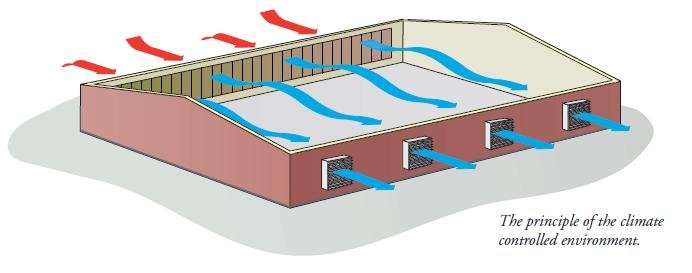
There are basically two methods, each providing a slightly different result. The next step is to determine the size of the pad that will be used in the greenhouse. The F temp value is calculated as 1.33, but since the required difference is less than 4 ☌, F temp is equal to 1.00. Since the structure is less than 30 m, AF <30 will be used in order to calculate the air flow requirements. The following calculations are made using and above equations:

The following example will illustrate the use of above formulas in order to calculate the air flow of a single span greenhouse with the following dimensions and data: The total air flow (m 3.min -1) required for a greenhouse less than 30 m long (AF <30)Ĭalculation of air flow for a greenhouse longer than 30 m (AF): The fans should not be placed further than 8 m from each other. This will require more fans however, but it will increase the efficiency of the system. If the greenhouse is longer than 60 m, the grower should try and place the pads along the length of the greenhouse and the fans on the opposite side. The pad to fan distance should never exceed 60 m. For greenhouses longer than 30 m, only the F house factor is used in further calculations. The velocity factor (F vel) and greenhouse design factor (F house) is used when the pad to fan distance is equal or less the 30 m. The next step is to determine the pad to fan distance factor (F vel). All these factors determine the factor that needs to be used to adjust for the greenhouse design (F house) The value of e = 2.7182818 which is a universal constant used in biological mathematics. If the difference is less than 4 ☌, F temp equals 1.00, otherwise use the following formula: This depends on the environment and crop requirements and type. The temperature difference that needs to be achieved between the pad and fan inside the greenhouse needs to be determined beforehand. Another less known unit is “phot”, in which case the constant (5000) must be replaced with 5.382.Īnother crude method of calculating the light intensity factor is using the average heat units between October and March (HUOM)for the specific area in which the greenhouse is located, and dividing it with the average heat units for the southern hemisphere for the same period. If foot candle values are not available, other units can be used such as “lux” in which the constant (5000) must be replaced with 53819. The factor for light intensity (Flight) can be determined in various ways: The light intensity will influence the amount of energy reaching the greenhouse thus will determine how quickly and to what temperature the greenhouse will be heated. The constant “e” has a value of 2.7182818…

A method of calculating the elevation factor (F elev) is provided in the equation below. Air is less dens at higher altitudes, so the elevation must be included in calculations. The elevation of the greenhouse is important since the heat removal capacity of air depends on its weight and not in its volume. The following data is required in calculating the pad and fan requirements:

Although the original calculations were in feet, the formulas have been converted to SI units. The calculations found below are based on those of Ausberger, Bohanon, et al. Thus maintenance of the greenhouse cladding is extremely important when installing a pad and fan system. This is important because the more air is sucked through the wet pads, the higher the efficiency of the pad and fan system. The effectiveness of a pad and fan system will also depend on how air tight the greenhouse is.


 0 kommentar(er)
0 kommentar(er)
